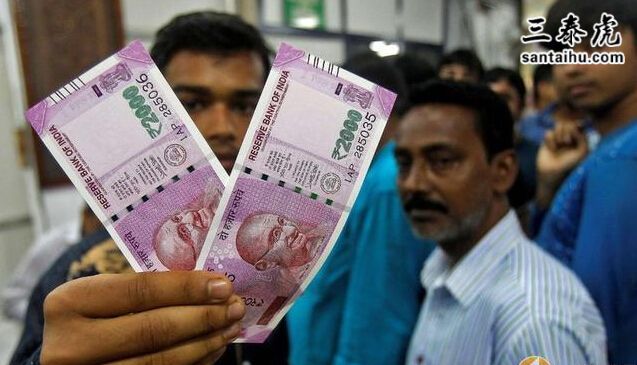印网友: 谁更有可能打破中等收入陷阱,中国还是印度?
Who is more likely to break the middle income trap, China or India?谁更有可能打破中等收入陷阱,中国还是印度? Quora评论翻译:来
Who is more likely to break the middle income trap, China or India?
谁更有可能打破中等收入陷阱,中国还是印度?
Quora评论翻译:
来源:三泰虎 http://www.santaihu.com/45984.html 译者:Jessica.Wu
外文:https://www.quora.com/Who-is-more-likely-to-break-the-middle-income-trap-China-or-India
Saurav Kumar Sinha, Digital Media Evangelist ll Blogger ll Published writer ll Frequent Traveler
India ... simply because expanding middle class and its increasing purchasing power will help the growth and Indian products/service have started to grow in foreign market. Earlier service market was silicon valley focused but not its getting diversified. Labor cost may come up as a challenge.
印度。因为不断扩大的中产阶级及其不断增长的购买力将有助于印度经济的增长,而且印度产品及服务已经开始在国外市场增长。早期服务市场主要集中在硅谷,但并不多样化。然而,劳动力成本可能会成为一个挑战。
Shubham Jain
now china is more close but in the next few years india will lead as the current changes going on india.people are now bothered about their economy ,politics and polices as they learn that these thing would change their life in the form of development as as you can see in the present few election held in india .how the blackmoney,corruption and development are the focus of govt . instead of how my father, my grand mother died etc
就目前而言,中国更有可能,但随着印度目前发生的变化,在未来几年印度将后来居上。人们现在对印度经济、政治和政策感到烦恼,因为他们知道这些东西会以发展的形式改变他们的生活,就像你在目前印度举行的几次选举中看到的那样,黑钱、腐败和发展才是政府关注的重点。
Sargis Aleksanyan, Master Computer Science, American University of Armenia (2017)
Of course China .
当然是中国
Sridhar Babu, In search of inner peace
Cant say either way . India has got potential, but bureaucracy is preventing that from happening.
都不好说,虽然印度有这种潜力,但官僚主义正在阻止这种情况的发生。
Krishna Ramachandra
China because the government there is more decisive
中国。他们的政府更加果断。
Iqbal Ezra, An Obeserver, A dreamer and A Builder
I think both country can do it but it will need a lot of adjustment from their people and their government. Besides only time will tell. So wether you are chinese or indian both got their strengths and their weaknesess and both need to deal with it.
我认为两个国家都能做到,但这需要两国人民做出很多调整。此外,只有时间才能证明一切。无论是中国人还是印度人,都有他们的优势和弱势,各自都需要处理好。
Sagar Upreti, Accountant interested in science, history, philosophy and all the things which i wish i read.
China and India both have issues related to the Corruption, the country which can reduce it fast will break the circle first. China as a socialist country with new initiative in corruption is more likely to break it first in my point of view.
中国和印度都存在腐败问题,能迅速减少腐败的国家将先打破这个陷阱。在我看来,作为一个社会主义国家,中国在反腐问题上有了新举措,更有可能先打破这个陷阱。
Randy McDonald, Student of history and empires
Right now, China is more likely if only because it is much closer to being a middle-income country than India.
目前来看,中国更有可能。因为中国比印度更接近于成为一个中等收入国家。
Anudeep Ravi, overthinking stuff .... or Am I?
India. As of now, India is not developed enough to be in that situation however.
Indian service Sector is far far Stronger, and not reliant on It's Comparatively smaller manufacturing sector. It's Trivial to shift It's Focus Internally once Economy Grows Instead Of working outsourced Products.
Failure of Transition from Manufacturing to service sector to support Rising Quality of life is what causes Middle Income Trap. Middle income trap
China has Successfully reached this point, and is working to come out of it.
India has not reached This point Yet, But the Groundwork to come out of the trap Is already here.
印度。然而,到目前为止,印度的发展程度还不足以阻止这种情况的发生。
印度的服务业要强大得多,而且不依赖规模相对较小的制造业。一旦经济增长,将重心从外包产品转移到内部就变得微不足道了。未能从制造业向服务业转型以支持不断提高的生活质量,是造成中等收入陷阱的原因。中国已经步入了中等收入陷阱,并且正在努力走出这一困境。印度尚未步入这一陷阱,但已经打好了走出陷阱的基础。
Abhijit K, studied at Kendriya Vidyalaya
currently China . But soon India will rise again . I'm saying this because I'm myself a student and have been observing a change of the common psyche in India regarding many things like politics and politicians , education system and developmental issues . a more liberal outlook is starting in India , voices are being raised against the stupid people who speak loud about Indian culture and such but are themselves very less cultured .
some possible reasons for this :
1.true Indian culture is not a set of iron clad rules to restrict your actions . It pleads us to be tolerant , well mannered and amicable . It states that the familial bonds must be that of mutual respect , love and caring . this gives them a special capability to adapt to any situation or working conditions . (this does not mean they will be all ready to work in animal slaughter industries )
2.National identity : the Indian national identity is a vague one but a strong one at that . we are a nation which wants to be treated as equals by everyone else . this means that the non- hypocrites tend to treat others with respect and do not look down on others . this means healthier approach in life and decision making . A strong sense of need to contribute something useful to your country arises .
3.An ambitious population : Unlike many , Indians tend to work harder for achieving their goals (not just blaming something else but also putting in more efforts to achieve better)
4.Resent shift in government policies : the changes are quasi static when you look from far away , but when you see it from near you start to notice the zeal in the common folk to implement these changes . Younger generations of bureaucrats are taking over the realm and unlike the 60s when corruption was gaining ground in the hearts of people this time it is loosing ground .
5.Population : We have an average lifespan of below 67 I think , though some may see this as a sign of lack of development it can also mean that the population is kept healthy and its working capability is maintained . In most of the Indian states the fertility rate is below 2 , the avg. fertility rate in India was around 6 in the 50s and 60s now it is below 2.5 . this means the population is slowly but steadily reaching into a control stage .
6.Market environment is slowly changing : as of now India is not so business friendly . but that doesn't mean that things are not changing .
7.General awareness of people : from sex education or at least general awareness about birth control and family planning to awareness about opportunities in higher studies to start-ups .
but all this is still not enough for outrunning china in the near future . and i cannot predict about the long term scenario , but still there is a reasonable possibility for India .
we need to understand that India is an anomaly coz it skipped the industrialisation phase and would never become as industrialised as china .
Our service sector is very strong and grows at a considerable rate .
目前是中国更有可能,但印度很快将再次崛起。我之所以这么说,是因为我是一名学生,一直在观察在印度,人们对政治、政治家、教育体系和发展问题等许多事情的看法的改变。一种更加自由的观点开始出现,人们开始反对那些高声谈论印度文化但自己却并不是那么有修养的蠢人。
原因如下:
1.真正的印度文化并不是一套限制个人行为的铁则。它要求我们宽容,礼貌,友好。它指出,家庭纽带必须是相互尊重、爱护和关心。这给了他们适应任何情况或工作条件的特殊能力。(但这并不意味着他们将愿意在动物屠宰行业工作)
2.国家认同:印度的国家认同是模糊的但也是强大的。我们是一个希望被别人平等对待的国家,这意味着我们倾向于尊重他人而且不轻视他人。这意味着更健康的生活和决策方式。而且,一种为国家做贡献的强烈意识出现了。
3.雄心勃勃的人们:和很多人不同的是,印度人倾向于更加努力地工作以实现他们的目标。
4.憎恨政策的转变:当你从远处看时,变化是静态的,但当你从近处看时,你开始注意到普通民众执行这些变化的热情。年轻一代正在接管国家,与60年代不同的是,当时腐败在印度人的心中蔓延,而现在,腐败正在失其根基。
5.人口:我们的平均寿命低于67岁,尽管有些人认为这是发展不足的标志,但我认为这也意味着人口健康,工作能力也得以保持。在印度大多数邦生育率低于2,印度平均生育数在50年代和60年代大约是6,但现在低于2.5。这意味着人口正在缓慢而稳定地进入控制阶段。
6.市场环境正在缓慢改变:到目前为止,印度的商业环境并不那么友好。但这并不意味着情况没有改变。
7.人们的总体认知:从性教育或者至少是对计划生育的普遍认识,到对高等教育机会的认识,再到创业。
但这一切还不足以在不久的将来超越中国。我无法预测长期情况,但印度仍有合理的可能性。我们需要明白,印度是一个不寻常的国家,因为它跳过了工业化阶段,永远不会实现像中国那样的工业化。但我们的服务行业非常强大,并且正以相当快的速度增长。
Adnan Zafar, Actuary, Movie Buff, Love Science
Personally I don't think India has reached the middle income point yet, let alone being stuck there and failing to grow beyond that.
The country has a per capita income of about $3,600 (in 'international dollars'), "technically" bringing it within the ambit of the IMF's definition for middle income nation.
However, this does not showcase the true picture. It's difficult to apply the definition of 'middle income' to a country where around 300 million live on less than a dollar a day.
So in short, China. India is yet to reach the middle income stage !
在我看来印度还没有达到中等收入水平,更不用说进入陷阱,无法再继续增长了。
印度人均收入约为3600美元(按“国际美元”计算),严格来说这一数字符合国际货币基金组织对中等收入国家的定义。然而,这并不能代表真实的情况。很难将“中等收入”的定义应用到一个约有3亿人每天生活费不足1美元的国家。
简言之,中国更有可能。印度还没有达到中等收入阶段!
Abhimanyu Tyagi, Business Analyst at American Express (2017-present)
China.
In any economy, the development goes from agriculture to manufacturing, and then from manufacturing to service. Currently, China is at manufacturing phase. So it has a lot of space to develop and grow its economy.
India is an exception. It has grown directly from agriculture to service. Manufacturing sector is struggling very much in India. Share of manufacturing in China's GDP is around 34%, while in India, it is just 14%. Moreover, almost 60% of China's export include Technology, while same for India is just 27%. Reason, policies in India are very stringent.
It will take you around two years just to get a clearance for establishing your business, that too when you pass every government official with ease.
Now the new Modi government has promised a lot of reforms, but implementation part is still pending. So, we still have a lot to do.
China has already taken the next step, their result is awaited. India, on the other hand, is yet to take the next step.
在任何经济体中,发展都是从农业到制造业,然后从制造业到服务业。目前,中国正处于制造业阶段。因此,中国有很大的发展经济的空间。
印度是一个例外。它直接从农业发展到服务业。印度的制造业正在苦苦挣扎。中国制造业占GDP的比例约为34%,而印度仅为14%。此外,中国近60%的出口包括技术,而印度的这一比例仅为27%。原因在于印度的政策非常严格。
你要花两年左右的时间才能获准成立自己的公司。
现在,莫迪政府已经承诺进行大量改革,但实施部分仍未完成。所以,我们还有很多事情要做。
中国已经迈出了下一步,他们的结果还有待观察。然而印度尚未迈出下一步。
Joseph Jones, MacroView Research
Short Answer: China
Longer Answer: Overall solid infrastructure needs to be solid for a middle income country to become a high-income country. Without a solid infrastructure foreign direct investment (FDI) will be hampered because most investors aren't very patient in "waiting it out" for a new airport or logistical transit system to be built before being able to generate solid returns.
That being said China is currently outpacing India in the infrastructure development process. See: Global country ranking by quality of infrastructure 2014 | Statistics and Infrastructure rankings | ND-GAIN Index.
In addition, China is positioning itself to have the Yuan become apart of the SDR. See: IMF says yuan on path to inclusion in SDR basket This is a pivotal point to push China closer to making the Yuan a more formidable currency in which it has already signed multiple bilateral trade agreements using the Yuan in trade (UAE, Japan, Russia) and using the USD less frequently with those trading partners.
The conclusion is China will be able to transition out of the middle income trap assuming it continues to make steps to make its currency "convertible" and develop its economy from a mercantilism economy into more of a consumption based economy. Keep in mind, it takes time. Regards
简短回答:中国
详细回答:一个中等收入国家要想成为高收入国家,必须要有整体坚实的基础设施。如果没有坚实的基础设施,外国直接投资将会受到阻碍,因为大多数投资者都没有耐心“等待”一个新机场或物流运输系统的建成,然后再产生可观的回报。
也就是说,中国目前在基础设施发展过程中超过了印度。参考:全球基础设施质量排名 |统计和基础设施排名| ND-GAIN指数。
此外,中国希往人民币被纳入特别提款权。参考:国际货币基金组织称人民币将被纳入特别提款权。这是推动人民币成为一种更强大货币的关键点。中国已经在贸易中(阿联酋、日本和俄罗斯)使用人民币签署了多项双边贸易协议,并减少了与这些贸易伙伴使用美元的频率。
结论是,如果中国继续采取措施使人民币“可兑换”,并从重商主义经济发展为以消费为基础的经济,它将能够摆脱中等收入陷阱。但要记住,这需要时间。
版权声明
我们致力于传递世界各地老百姓最真实、最直接、最详尽的对中国的看法
【版权与免责声明】如发现内容存在版权问题,烦请提供相关信息发邮件,
我们将及时沟通与处理。本站内容除非来源注明五毛网,否则均为网友转载,涉及言论、版权与本站无关。
本文仅代表作者观点,不代表本站立场。
本文来自网络,如有侵权及时联系本网站。
阅读:
-
1
चाइना में रेडी और ठेले Local shops in china || L...
- 2
- 3
- 4
- 5
- 6
- 7
- 8
- 9
- 10
-
1
चाइना में रेडी और ठेले Local shops in china || L...
- 2
- 3
- 4
- 5
- 6
- 7
- 8
- 9
- 10












